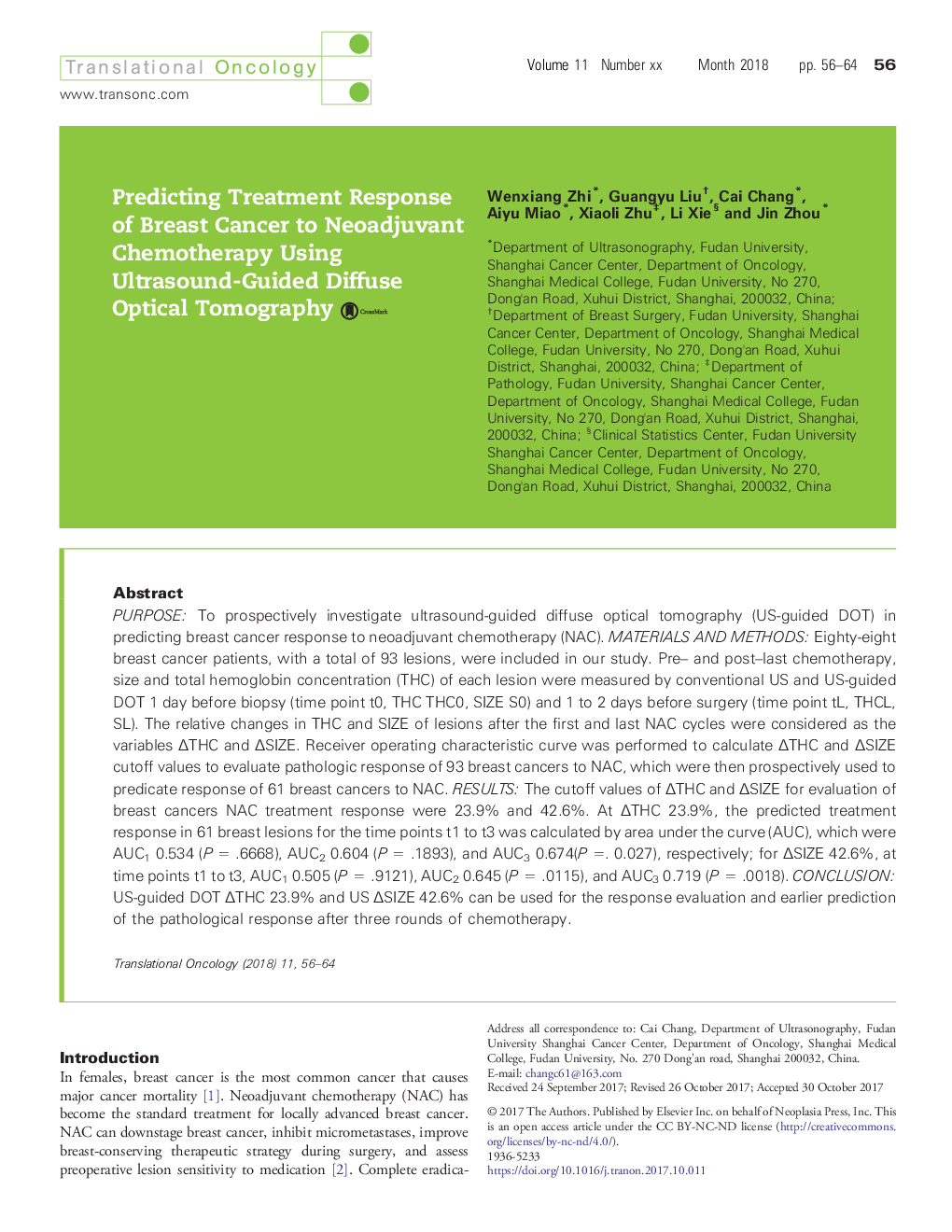| Article ID | Journal | Published Year | Pages | File Type |
|---|---|---|---|---|
| 8460045 | Translational Oncology | 2018 | 9 Pages |
Abstract
PURPOSE: To prospectively investigate ultrasound-guided diffuse optical tomography (US-guided DOT) in predicting breast cancer response to neoadjuvant chemotherapy (NAC). MATERIALS AND METHODS: Eighty-eight breast cancer patients, with a total of 93 lesions, were included in our study. Pre- and post-last chemotherapy, size and total hemoglobin concentration (THC) of each lesion were measured by conventional US and US-guided DOT 1 day before biopsy (time point t0, THC THC0, SIZE S0) and 1 to 2 days before surgery (time point tL, THCL, SL). The relative changes in THC and SIZE of lesions after the first and last NAC cycles were considered as the variables ÎTHC and ÎSIZE. Receiver operating characteristic curve was performed to calculate ÎTHC and ÎSIZE cutoff values to evaluate pathologic response of 93 breast cancers to NAC, which were then prospectively used to predicate response of 61 breast cancers to NAC. RESULTS: The cutoff values of ÎTHC and ÎSIZE for evaluation of breast cancers NAC treatment response were 23.9% and 42.6%. At ÎTHC 23.9%, the predicted treatment response in 61 breast lesions for the time points t1 to t3 was calculated by area under the curve (AUC), which were AUC1 0.534 (PÂ =Â .6668), AUC2 0.604 (PÂ =Â .1893), and AUC3 0.674(P =. 0.027), respectively; for ÎSIZE 42.6%, at time points t1 to t3, AUC1 0.505 (PÂ =Â .9121), AUC2 0.645 (PÂ =Â .0115), and AUC3 0.719 (PÂ =Â .0018). CONCLUSION: US-guided DOT ÎTHC 23.9% and US ÎSIZE 42.6% can be used for the response evaluation and earlier prediction of the pathological response after three rounds of chemotherapy.
Related Topics
Life Sciences
Biochemistry, Genetics and Molecular Biology
Cancer Research
Authors
Wenxiang Zhi, Guangyu Liu, Cai Chang, Aiyu Miao, Xiaoli Zhu, Li Xie, Jin Zhou,
